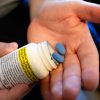The Crazy Horse Bar has reopened (minus the mannequin sentry, which was way creepier than Laffing Sal at Lakeside). One of the important elements the new Crazy Horse Bar has retained is the one-of-a-kind Googie neon sign, now displayed inside.
While it has been a decades-long triumph that the Crazy Horse Bar sign has been repatriated, other Colfax Avenue neon treasures rest on the precipice of oblivion. With leadership and vision, innovative cities like Vancouver, San Jose, San Francisco, Los Angeles, and even Lee’s Summit, Missouri, have acknowledged the importance of these signs in their cityscape and have adjusted their codes, zoning, and ordinances to accommodate, preserve, and protect them. They have also supported their preservation with public funding. Denver still has not.

Denver has a dwindling array of these treasures, not just lining Colfax but throughout the city, that can still be rejuvenated, not merely for nostalgic voyeurism but as integral parts of the city’s night environment. The neon signs are glowing testaments to the history of the city — but more importantly, to the family businesses that helped the city to prosper. The same businesses where people ate, shopped, stayed the night, or were entertained by ‘topless talent’. These are the temporal monuments of people’s lives.
Colfax Avenue, U.S. 40, was once described by Playboy magazine as “the longest, wickedest street in America.” In his 1953 travelogue, George Stewart claimed U.S. 40 “is complex after the manner of a man’s personality, in that it cannot be weighed, or even defined clearly-though it is highly interesting and can be talked about indefinitely.” Places like the Crazy Horse Bar are the threads that weave together this urban tapestry, and their neon signs are the beacons that call out vibrant invitations in the night. As the author Candacy Taylor notes, “an agency of place.”
In 1974 three significant events happened in Denver: the Denver Rockets changed their name to the Denver Nuggets, Casa Bonita opened its magical doors, and my mother went to her first and only burlesque show at Sid King’s Crazy Horse Bar. And now, almost 40 years later, the Nuggets have won the NBA finals for the first time, Casa Bonita has been reimagined (without the much-maligned menu), and the Crazy Horse Bar is back in business.

Thanks to the volunteers at Save the Signs, a Denver organization which, for more than a decade, has been dedicated to raising awareness about and protecting, rescuing, and relighting the historic neon signs of Denver, the same iconic lettered neon sign that appeared in “Every Which Way But Loose” (1978) with Clint Eastwood and Clyde the orangutan is now blazing on the inside barroom wall.
Neon is the fifth most common element in the universe. Photographs from the Hubble telescope reveal beautiful color bursts that are in large part illuminated by the light discharge of excited neon atoms in a vacuum. It is not an overstatement to say that earthly neon lights are vessels that contain small samplings of cosmic fireworks. Every city should hope to be lit in this manner. If it embraces it, the city of Denver has that opportunity.
The Nuggets may win multiple championships. Casa Bonita might offer edible food. The Crazy Horse Bar might arouse a renaissance of illuminated nightlife in Denver. One can only hope.

Todd Matuszewicz is a fifth generation Denverite. He began bending glass in 1987, and saved and restored his first Denver sign in 1995. He joined forces with Save the Signs Denver in 2021, and has helped to restore dozens of signs, mostly for private collectors.




